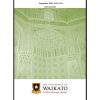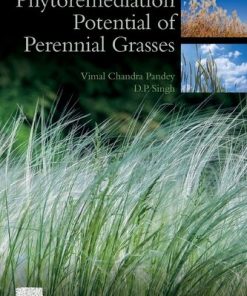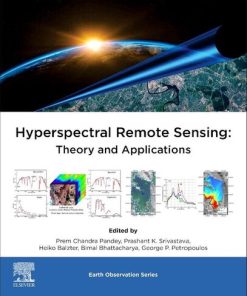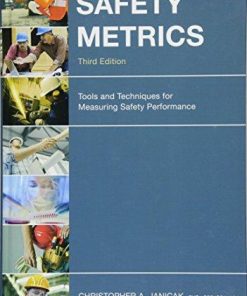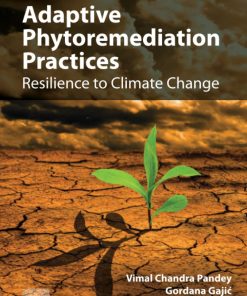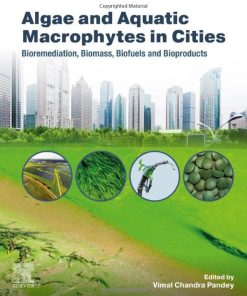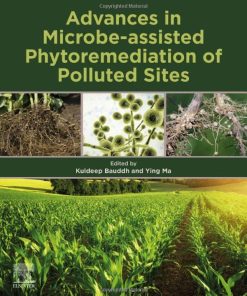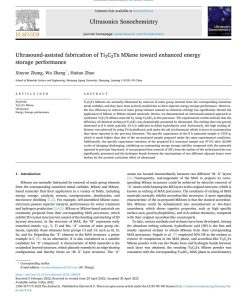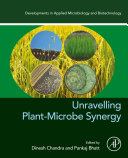Assisted Phytoremediation Potential Tools to Enhance Plant Performance 1st edition by Vimal Chandra Pandey 0128228938 978-0128228937
$50.00 Original price was: $50.00.$25.00Current price is: $25.00.
Assisted Phytoremediation: Potential Tools to Enhance Plant Performance 1st edition by Vimal Chandra Pandey – Ebook PDF Instant Download/DeliveryISBN: 0128228938 978-0128228937
Full download Assisted Phytoremediation: Potential Tools to Enhance Plant Performance 1st edition after payment.
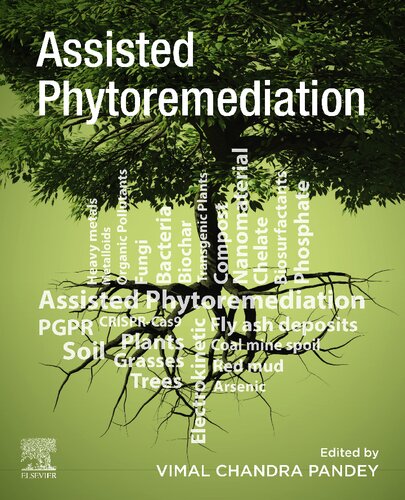
Product details:
ISBN-10 : 0128228938
ISBN-13 : 978-0128228937
Author : Vimal Chandra Pandey
Assisted Phytoremediaion covers a wide range of uses of plants for remediation of environmental pollutants. It includes coverage of such techniques as root engineering, transgenic plants, increasing the biomass, use of genetic engineering and genome editing technology for rapid phytoremediation of pollutants. In order to improve the efficiency of plant remediation, genetic engineering plays a vital role in the overexpression of genes or gene clusters, which are responsible for degradation and uptake of pollutants. The book presents state-of-the-art techniques of assisted phytoremediation to better manage soil and water pollution in large amounts.
Assisted Phytoremediation: Potential Tools to Enhance Plant Performance 1st Table of contents:
Chapter 1 Understanding assisted phytoremediation: potential tools to enhance plant performance
Abstract
1.1 Introduction
1.2 Assisted phytoremediation
1.3 Potential possibilities of application of assisted phytoremediation for utilizing polluted sites using economically valuable plants: economic and environmental sustainability
1.4 Conclusion
References
Chapter 2 Plant-assisted bioremediation: Soil recovery and energy from biomass
Abstract
2.1 Introduction
2.2 Soil amendments for enhancing phyto-assisted bioremediation efficiency
2.3 Root exudates: key compounds in driving plant-microbial interactions
2.4 Investigation of soil microbial community structure and functioning in PABR experiments
2.5 Energy from phyto-assisted bioremediation biomass
2.6 Conclusions
Acknowledgments
References
Chapter 3 Arbuscular mycorrhizal fungi-assisted phytoremediation: Concepts, challenges, and future perspectives
Abstract
3.1 Introduction
3.2 Arbuscular mycorrhizal fungi diversity in contaminated soils
3.3 Mechanisms involved in mycorrhizal plant tolerance to soil pollutants
3.4 AMF-assisted phytoremediation of polluted soils
3.5 Phytoextraction and phytostabilization
3.6 Mechanisms involved in soil phytoremediation by mycorrhizal plants
3.7 Contribution of mycorrhizal inoculation in polluted soil functionalization and in plant biomass valorization
3.8 Challenges and future perspectives
Acknowledgments
References
Further Reading
Chapter 4 Biochar assisted phytoremediation for metal(loid) contaminated soils
Abstract
4.1 Introduction
4.2 What is biochar?
4.3 What are the properties of biochar?
4.4 The effects of biochar application on soil and soil pore water properties
4.5 The effect of biochar on metals and metalloids
4.6 The effect of biochar on the soil microbial community
4.7 The effects of biochar on plants
4.8 The importance of biochar dose
4.9 Improving biochar effects: functionalization and combination with other amendments
4.10 Conclusions and perspectives
References
Chapter 5 Chelate-assisted phytoremediation
Abstract
5.1 Introduction
5.2 Chelating agents
5.3 The principle of chelate-assisted phytoremediation
5.4 Metal mobilization in soil
5.5 Interfering ions
5.6 Chelant degradability in soil
5.7 Chelate uptake by plants
5.8 Effects of chelates on the plant
5.9 Examples of chelate-enhanced phytoremediation studies
5.10 Advantages and drawbacks of chelate-assisted phytoremediation
References
Chapter 6 Nanoparticles-assisted phytoremediation: Advances and applications
Abstract
6.1 Introduction
6.2 Methods used in phytoremediation
6.3 Types of nanoparticles
6.4 Synthesis of nanoparticles
6.5 Applications of nanoparticles in phytoremediation
6.6 Future perspectives in the utilization of nanoparticle-mediated phytoremediation
6.7 Conclusion
References
Chapter 7 Transgenic plant-mediated phytoremediation: Applications, challenges, and prospects
Abstract
7.1 Introduction
7.2 Pros and cons of phytoremediation using genetically engineered plants
7.3 Transgenic plants mediated phytoremediation
7.4 Application of transgenic plants mediated phytoremediation of polluted environments
7.5 Application of advanced omic technologies in enhancing phytoremediation
7.6 Nanoparticle-mediated plant transformation
7.7 Safety issues in the use of transgenic plants for phytoremediation
7.8 Future prospects of genetically modified plants in phytoremediation
References
Chapter 8 CRISPR-assisted strategies for futuristic phytoremediation
Abstract
8.1 Introduction
8.2 Basic of CRISPR biology
8.3 Molecular mechanism of the CRISPR-Cas9 system
8.4 Phytoremediation for removal of pollutants
8.5 Phytoremediation by enriching microbes-plant interaction
8.6 Phytoremediation using engineered plant
8.7 Biofortification and phytoremediation
8.8 CRISPR-Cas9 system for genome editing towards bioremediation
8.9 CRISPR-Cas9 technology and climate resilient phytoremediation
8.10 Conclusion and future remarks
Acknowledgement
References
Chapter 9 Approaches for assisted phytoremediation of arsenic contaminated sites
Abstract
9.1 Introduction
9.2 Methods of phytoremediation
9.3 Assisted phytoremediation
9.4 Conclusions and future perspectives
References
Chapter 10 Compost-assisted phytoremediation
Abstract
10.1 Introduction
10.2 What is compost?
10.3 Compost quality evaluation
10.4 Types of compost
10.5 Impact of compost application on soil systems
10.6 Impact of compost on metal(loids) mobility in soil/plant systems
10.7 Impact of composts on soil microbial activity
10.8 Impact of compost on plants
10.9 Augmenting compost impact by mixing with other amendments
10.10 Conclusions and future prospects
References
Chapter 11 Bioremediation of contaminated soil with plant growth rhizobium bacteria
Abstract
11.1 Introduction
11.2 Bioremediation
11.3 Importance of plant growth promoting rhizobacteria in bioremediaiton and phytoremediation
11.4 Mechanisms involved in bioremediation by plant growth promoting rhizobacteria
11.5 The functions of plant growth promoting rhizobacteria in phytoremediation
11.6 Conclusions and future outlooks
References
Chapter 12 Phytobial remediation by bacteria and fungi
Abstract
12.1 Introduction to phytobial remediation by bacteria and fungi
12.2 Phytobial remediation by plant growth-promoting bacteria
12.3 Phytobial remediation by mycorrhizal fungi
12.4 Enzymatic degradation of organic compounds
12.5 Integrated phytobial remediation for functional cleanup environment
12.6 Conclusion
Acknowledgments
References
Chapter 13 Recent developments in phosphate-assisted phytoremediation of potentially toxic metal(loid)s-contaminated soils
Abstract
13.1 Introduction
13.2 Phytoremediation
13.3 Phosphate-assisted phytoremediation
13.4 Phosphorus dynamics in soil as an assisted phytoremediation agent
13.5 Role of the microbial community in phosphate-assisted phytoremediation
13.6 Phosphate effects on plant growth and potentially toxic metal(loid)s detoxification
13.7 Advantages and limitation of phosphate-assisted phytoremediation
13.8 Conclusions and future outlooks
Acknowledgements
Abbreviations
References
Chapter 14 Electrokinetic-assisted Phytoremediation
Abstract
14.1 Introduction
14.2 Fundamentals of electrokinetic-assisted phytoremediation
14.3 Practical aspects of EK-phytoremediation
14.4 Effects of EK-phytoremediation on soil properties and microbiota
14.5 Effects of the electric current application on plant growth
14.6 EK-Phytoremediation of Metal-Polluted Soils
14.7 EK-Phytoremediation of Organic Pollutants
14.8 Learned lessons and future challenges
Acknowledgements
References
Chapter 15 Biosurfactant-assisted phytoremediation for a sustainable future
Abstract
15.1 Introduction
15.2 Soil inorganic and organic pollutants—source and concern
15.3 Biosurfactants—the 21st century’s multifunctional biomolecules
15.4 Biosurfactants-assisted phytoremediation
15.5 Significance of Biosurfactant in Phytoremediation
15.6 Conclusion
People also search for Assisted Phytoremediation: Potential Tools to Enhance Plant Performance 1st:
endophyte assisted phytoremediation
chelate assisted phytoremediation
pgpr assisted phytoremediation
biochar assisted phytoremediation
how does phytoremediation work
Tags: Assisted Phytoremediation, Potential Tools, Enhance Plant, Performance, Vimal Chandra Pandey
You may also like…
Business & Economics - Accounting
Evaluating Corporate Financial Performance : Tools and Applications 1st edition Jacek Welc
Uncategorized
Safety Metrics: Tools and Techniques for Measuring Performance Third Edition – Ebook PDF Version
Uncategorized
Adaptive Phytoremediation Practices: Resilience to Climate Change Vimal Chandra Pandey
Earth Sciences - The Environment
Biology and other natural sciences - Plants: Agriculture and Forestry
Biology and other natural sciences - Biology
Unravelling Plant-Microbe Synergy 1st Edition by Dinesh Chandra


